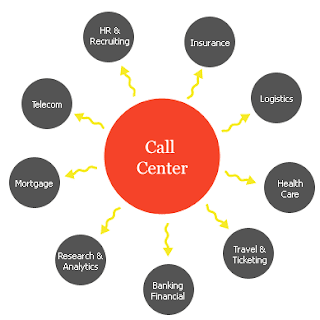What Is a Call Center? A Detailed Guide 2023
Exactly what is call center, so how exactly does it vary from a message center and just what do day-to-day operations seem like?
Editor’s note: The information was updated in November. 21, 2022 to mirror current trends and knowledge. It was initially printed in the month of January 2022.
Customer support is a valuable part of managing a modern business. What is call center organizations with medium-to-large customer bases frequently making use of a centralized answering services company to deal with customer support issues?
Gartner defines the call center as a “department by which employees receive making high volumes of phone calls” with internal customers (for example helpdesks) and exterior customers (customer support and support).
Call centers have numerous purposes, including:
- Customer service and support
- Account management
- Market research
- Telemarketing
- Billing
What Is a Call Center vs. a Contact Center?
Traditional customer support models trusted customers making an appointment to some company every time they were built with a question, concern, or problem that needed solving. Thus, the call center was created.
Today, however, customers can interact with brands in a number of ways – through phone, text, email, live online chats, and much more. As a result, the call center has changed into a contact center.
You may see some call center company definitions that argue sales departments deal solely with calls while contact centers handle another way of communication. Many people, however, begin using these two terms interchangeably.
We’ll dig just a little much deeper into the role of the call center, such as the impact of recent and emerging technology.
How Call Centers Work
What do call centers do, exactly?
They function as the hub for customer support. They permit people to communicate with companies without the need to visit an outlet, branch, or office.
If your customer includes a question, really wants to pay an invoice, or creates a complaint, they are able to achieve this at their own convenience. And they are not restricted to telephone calls, either. They may also use social networking, texts, email, and live site chat.
Still, phone-based call centers haven’t fallen in favor, regardless of the rise from the digital-first landscape.
According to data from a 2022 Hiya report — surveying 12,000 consumers across the US, UK, Canada, Germany, France, and Spain — people prefer phone calls over all other communication methods when interacting with brands.
Consumers’ top five communication channels, ranked, include:
- Phone Calls (32%)
- Email (20%)
- Text Message/Instant Message (12%)
- Video Call (6%)
- Chatbots (5%)
The large takeaway from this data? Customers want to speak to humans and obtain their questions clarified in tangible time – something phone support is capable of.
How companies offer this phone support typically varies according to their size and also the sources and tools at hand. It isn’t uncommon for big brands to possess multiple departments inside their sales departments, with everyone coping with a specific kind of call (complaint, questions, general comment, etc.).
Small brands, however, may have just one department with a number of dedicated agents.
Types of Call Centers
We have already reviewed what is call center means as it requires means of contact (phone versus. other methods). However, the phrase a phone call center is much more nuanced, breaking lower into three types:
- Inbound
- Outbound
- Automated
Inbound Call Centers
An inbound call center is one that primarily handles incoming calls.
Within this setup, the client calls an unknown number to achieve the company. Oftentimes, customers will first encounter an interactive voice response (IVR) system.
This technique depends on keywords, for example, “pay an invoice,” “track a delivery,” or “username and passwords” to know the client’s request and hand the phone call off right agent.
Agents employed in these sales departments know how to approach common demands rapidly and precisely to make sure maximum client satisfaction.
Outbound Call Centers
In an outbound calling center, agents make outgoing calls to people on a qualified list.
The organization pulls its list from the (CRM) platform and filters it to make sure employees only contact individuals who’ve opted directly into communications.
Organizations typically use outbound sales departments for marketing campaigns, sales or researching the market. However, they are susceptible to government regulation in lots of parts around the globe, with guidelines dictating when and how companies can call residential phone figures.
The Phone Consumer Privacy Act (TCPA) in America, for example, explains limitations on using telephone equipment, for example, automatic dialing systems.
Because of these limitations, a lot of companies have transferred their outbound communication techniques to non-phone options, for example, email and text.
Automated Call Centers
Many modern contact centers rely on IVR systems to automate call routing. Some smart systems also handle common customer queries without resorting to agent intervention.
For example, a person can get in touch with, condition their address and receive updates about the status of the package. They may also enter their account number and payment information to pay for an invoice.
The machine may also reroute the phone call for an agent when the customer prefers talking to an individual or includes a complex ask.
These self-service options save time for purchasers and release agents to operate on more complicated tasks. Plus, the machine can certainly reroute the phone call for a worker when the customer prefers talking to an individual.
Virtual vs. Office-Based Call Centers
Prior to the rise of the digital age, sales departments were situated in physical offices. Today, because of the wide accessibility to fast, reliable internet, many answering services company agents work at home.
These workers are maintained by exactly the same technology as traditional sales departments, and also the finish-consumer experience continues to be the same. All online answering services company workers must job are online sites, a pc along with a headset.
Because call center agents could work around the world, call center company availability can span multiple time zones, which is a big benefit to companies searching to provide 24/7 availability.
Virtual jobs are also advantageous to employees, as hrs tend to be more flexible and workers do not have to commute to a workplace or follow a specific dress code.
Call center intelligence comes down to the technology a brand employs to handle calls and ease agent workloads.
Most established brands utilize technology such as:
- Computer telephony integration: Synchronizes computers and phone systems, allowing customer data to show onscreen during a call.
- Interactive voice response: Uses pre-recorded menu options and keywords to direct inbound calls.
- Automatic call distribution: Routes calls to the agent or department best suited to the inquiry.
- Omnichannel routing: Syncs, updates and manages all communication channels, including phone calls, text, email, and live chat.
- Team chat messaging: Allows internal teams to communicate via instant message for quick collaboration.
- Call recording: Records phone calls automatically or on-demand, typically for quality control or training purposes.
Today, many call centers use cloud-based solutions, which tend to be more flexible and adaptable than traditional software.
With cloud-located software, brands do not have to accommodate or maintain hardware. This kind of option would be available too anywhere anytime, which makes it beneficial for businesses with home-based agents.
Metrics That Measure Call Center Performance
Call center company operations are essential to companies simply because they cope with customers at various stages of the customer journey – from inbound sales to billing and account cancellation.
This pivotal role causes it to be essential to track the performance of the center and individual agents and appear to techniques for call center optimization. To get this done, brands utilize metrics that break lower into three groups:
- Historical: Help managers understand the historical demand of the call center, allowing the team to better forecast, schedule, and plan for the future.
- Real-time: Show the current demand the call center faces, helping managers understand intraday demand and better handle staffing levels.
- Customer-focused: Give an idea of the quality of customer service that callers receive, both on an overall and per-agent level.
The Pros and Cons of Working in a Call Center
Like any job, working in a call center has advantages and disadvantages.
Pros of Working in a Call Center
Some of the biggest benefits of call center work include:
- The barrier to entry is low. Someone could gain it by having a senior high school diploma or equivalent and virtually no previous experience. It is a great walking stone to positions in sales and customer experience.
- It offers valuable experience. A call center agent will gain many transferable skills, including communications, product knowledge, problem-solving, and team collaboration.
- The work is flexible. Many call center agents could work remotely or perhaps in a hybrid capacity. The hrs also usually flexible, well suited for individuals in class or along with other commitments.
- There’s an opportunity for advancement. Individuals who stay in it to have an extended time could possibly get promoted to team leader or any other more senior roles. Even individuals in junior-level positions can typically earn bonuses.
Cons of Working in a Call Center
Unfortunately, call center work comes with a few potential drawbacks, such as:
- The work can be challenging. Workers often deal with unhappy or irate customers and may not receive a lot of recognition for work well done.
- The work is mostly sedentary. Most shifts include sitting in front of a computer all day. Workers must actively remember to stretch, walk around, and drink water.
- The job can have a high turnover. In 2021, the call center attrition rate was 42%, according to a NICE survey.
- It can be hard to bond with colleagues. The high turnover and workload challenges can make it difficult to form long-term relationships.
Call Centers Promote Customer-Brand Relationships
Regardless of what service or product a business offers, it must keep its lines of communication with customers open. What is call center That relationship is exactly what keeps customers satisfied and builds loyalty?
The call center is a crucial element of brand-customer communication – without them, brands know less regarding their audience, lose out on significant areas of the client journey and, ultimately, lose business.





Comments
Post a Comment